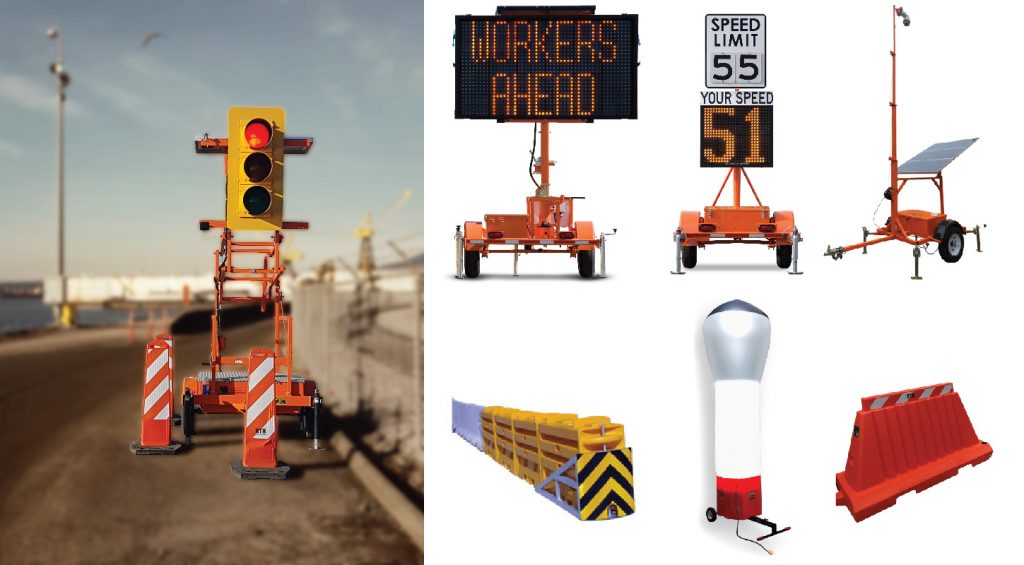Municipalities together with schools and private community administrations prioritize establishing safe roads as their main objective. Speed radar trailers act as an excellent data-based system to reduce speeding behavior while increasing driver awareness. These transportable devices deliver immediate performance data for drivers who avoid using permanent roadway infrastructure to encourage secure driving practices. This guide demonstrates the necessary steps for speed radar trailer implementation along with their configuration and usage to achieve maximum road Safety.

What Are Speed Radar Trailers?
Speed radar trailers operate through radar sensors and display speed readings on LED displays either as standalone systems or as towing units. Faring technology deployed by the radar detects vehicle speeds as they approach which the device shows on its display for the driver. Many people reduce their speed after seeing immediate feedback because these areas including school zones construction sites and residential neighborhoods are considered high‑risk.
Benefits of Speed Radar Trailers
- Immediate Driver Feedback
- Behavioral Change: Real-time speed display prompts drivers to make prompt adjustments in their movements.
- Awareness: Drivers develop better awareness about speed restrictions together with threatening situations while on the roads..
- Data Collection & Analysis
- Traffic Studies: Speed and volume measurements will help identify locations with problems.
- Performance Metrics: Efforts to control traffic should be monitored for their success metrics at different time intervals.
- Cost‑Effective & Flexible
- No Permanent Installation: Trailers become operational immediately without requiring closure of roads or building work.
- Portability: The system facilitates the relocation of units according to shifting security requirements at different locations.
- Enhanced Community Trust
- Visible Enforcement: Radar trailers function as safety equipment that signals dedication to road safety operations even when officers do not issue tickets.
- Public Engagement: People living in the community support forward-thinking approaches that shield walkers and bikers from harm.
Best Practices for Deploying Speed Radar Trailers
1. Select Strategic Locations
- High‑Risk Zones: Focus educational efforts on regions where speed-related accidents frequently occur such as school areas and playgrounds and accident zones.
- Traffic Calming Needs: The installation of these signs takes place in residential areas together with transitional zones that have faced numerous speeding complaints.
- Visibility: Truck trailers need placement in order to maintain visibility but avoid blocking clear views and safety areas.
2. Optimize Display Settings
- Adjust Brightness: The LED display must function in all lighting situations from day to night and bright conditions.
- Use Clear Messaging: Some units provide the ability to set custom messages among which users can select “Slow Down” or “Thank You.” The device will switch between displaying safety notices and providing vehicle speed feedback.
- Data Intervals: Set data-logging intervals at either 1-minute or 5-minute intervals for attaining proper storage capacity and data resolution.
3. Monitor and Analyze Data
- Regular Downloads: You should retrieve the logged speed and volume data either weekly or monthly for tracking patterns.
- Heat Maps & Reports: The software will generate visual data on the most common locations and times of speeding incidents.
- Adjust Deployment: The company will relocate trailers according to data-driven strategies to monitor developing hazardous situations.
4. Engage the Community
- Inform Residents: The project deployment process requires local communication through newsletters or social media platforms to explain both the project purpose and its advantages.
- Solicit Feedback: Community members should help you determine ideal locations and strategy effectiveness for your traffic‑calming plan.
- Education Campaigns: The combination of radar trailers should happen alongside educational programs which run in schools and community centers.
5. Maintain Equipment
- Routine Inspections: Check radar accuracy, battery health, and solar panel cleanliness.
- Software Updates: Database reliability and display performance depend on keeping firmware updated.
- Secure Placement: Trailer hitches should always be locked to avoid towing-related incidents.
Frequently Asked Questions (FAQs)
Q: Do speed radar trailers issue tickets?
A: No, Radar trailers serve as real-time speed detecting vehicles that collect information while maintaining operation independent of driver and vehicle identification. The devices operate as a component of public safety education and risk prevention.
Q: How long should a radar trailer stay in one location?
A: The deployment duration for disaster field projects lasts between one week and one month based on data-collection objectives and community needs. The change of locations enables the resolution of various community issues.
Q: Can radar trailers operate off‑grid?
A: Yes, The most common units use solar energy coupled with battery reserves to stay operational across all locations where traditional power is absent.
Q: What maintenance is required?
A: Regular checks of battery state and solar panel performance as well as radar calibration need to be done once a month. Regular cleaning of displays must coincide with checks verifying the trailer remains properly attached.
Q: How accurate are speed radar trailers?
A: Radar trailers of modern design maintain measurement accuracy within a range of ±1–2 mph when they receive proper maintenance and calibration. Regular inspections ensure ongoing precision.
Conclusion
Speed radar trailers offer users a combination of versatility and economic efficiency in order to advance road safety. Public speed radar units deliver instantaneous warnings to drivers while gathering useful information while showing dedication to community wellness thus establishing safer roadways. When correctly deployed while maintaining units with thorough care and establishing community relationships the technologies achieve their highest performance.
The Safety Network Inc. website offers information about integrating speed radar trailers and visitors can see the complete traffic safety solution lineup available at our website.

